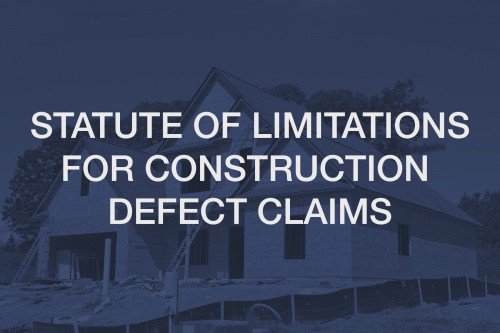Updated on December 3, 2019
To determine the statute of limitations for construction defect claims, there are two types of construction defects: (a) patent construction defects, and (b) latent construction defects. Depending on what type of defect you have, a different statute of limitations could apply.
A patent construction defect is the type of defect that an average consumer, during the course of a reasonable inspection, would discover. (See Creekridge Townhome Owners Ass’n, Inc. v. C. Scott Whitten, Inc. (2009) 177 Cal.App.4th 251, 256). For patent construction defects, the statute of limitations is four years from when the construction is substantially completed. (Code Civ. Proc. § 337.1).
In contrast, a latent construction defect is one that is “not apparent by reasonable inspection.” (Code Civ. Proc. § 337.15). Due to the nature of the defect, analyzing the statute of limitations for a latent defect is more complicated because it depends on: (a) when you discover the construction defect, i.e. when you suspect, or reasonably should suspect, that someone has done something wrong to cause the injury; (b) when the construction was substantially completed; and (c) the underlying legal theory of recovery for any damages arising out of a construction defect. For example, where the plaintiff pleads negligence and breach of contract causes of action, the statute of limitations is analyzed in a two step process: (1) actions for latent defect must be filed within three years (Code Civ. Proc. § 338 [injury to real property]) or four years (Code Civ. Proc. § 337 [breach of written contract]) of discovery, but (2) in any event, must be filed within 10 years (§337.15) of substantial completion. (Creekridge Townhome Owners Ass’n, Inc. v. C. Scott Whitten, Inc. (2009) 177 Cal.App.4th 251, 257).
Schorr Law has experience with construction defect disputes between property owners and contractors. Contact us to see if you qualify for a free 30-minute consultation. You can reach us by phone at (310) 954-1877, or text us at (310) 706-2265. You can also contact by email at info@schorrlaw.test2.redblink.net, or also use our Contact Form to send us a message.
